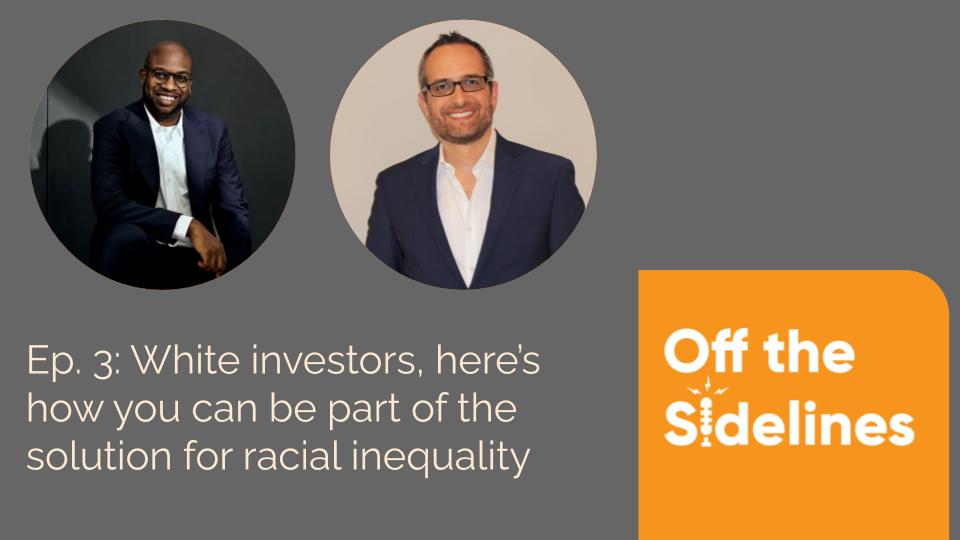Private market business investing is overwhelmingly white — both who is investing and who is being invested in.
Whether you think this represents a massive business failing — consider the “Lost Einsteins” and underserved consumers — or a moral failure, there’s growing urgency to make lasting change. Recent years have seen a wave of Black-led venture funds; look to BLCK VC as one example of a coalescing of some of them.
But this lack of diversity in a powerful growth part of our economy stems from the choices and systems perpetuated by white investors. This mess isn’t the responsibility of Black, brown and other underrepresented people. To play with the old protest slogan: White silence is complicity.
No doubt some white investors may dismiss racial inclusion in their work as outside their work. But to those who do want to be part of change, Technical.ly spoke to the founder of one of the country’s newest Black-led investment firms and one the firm’s limited partners.
That’s the focus of this week’s episode of Off the Sidelines, an investor education podcast produced by us at Technical.ly and sponsored by Project Entrepreneur, a program by UBS: How can white investors combat racial inequality in venture capital?
Project Entrepreneur works to advance inclusive capital and diversify the pipeline of investors and supporters, which is why Technical.ly partnered to create this podcast around the investor journey, business trends and the future of the industry.
This episode pulls on Technical.ly reporting and a conversation with Brian Brackeen, cofounder and general partner of Lightship Capital, and Todd Khozein, the co-CEO of consultancy SecondMuse, which has an investment arm and put $20 million into the $50 million fund.
Listen to the full episode below, and watch the interview farther down.
Brackeen, who is Black, and Khoezein, who is Iranian, discussed the opportunities of their fund, and others, diversifying where and with whom they invest. With their help, we developed a kind of framework that any investor, whether with a firm or angel investing on their own, could use to audit their investments.
Here are a few of those questions:
- What is the makeup (race, gender, socioeconomic, geography, etc.) of the last 10 contacts who offered you introductions to entrepreneurs?
- What is the makeup of other places you establish deal flow (co-investors; inbound; events; media)?
- What is the makeup of the last 100 investments you evaluated?
- What is the makeup of the last 10 entrepreneur pitches you took, but did not choose to analyze?
- What is the makeup of the last 10 investments you analyzed, but did not invest in?
- What is the makeup of the last 10 entrepreneurs you invested in?
- What is the makeup of the 10 most successful investments you’ve made (which might serve as a pattern against which you match)?
- What is the makeup of your team and/or most common co-investors?
But asking those questions is only the first step, and there’s much more to absorb in the discussion.
We have more episodes coming up this season with conversations from notable figures throughout the investing world, so be sure to subscribe and keep up to date with all our episodes.
Follow Off the Sidelines here










